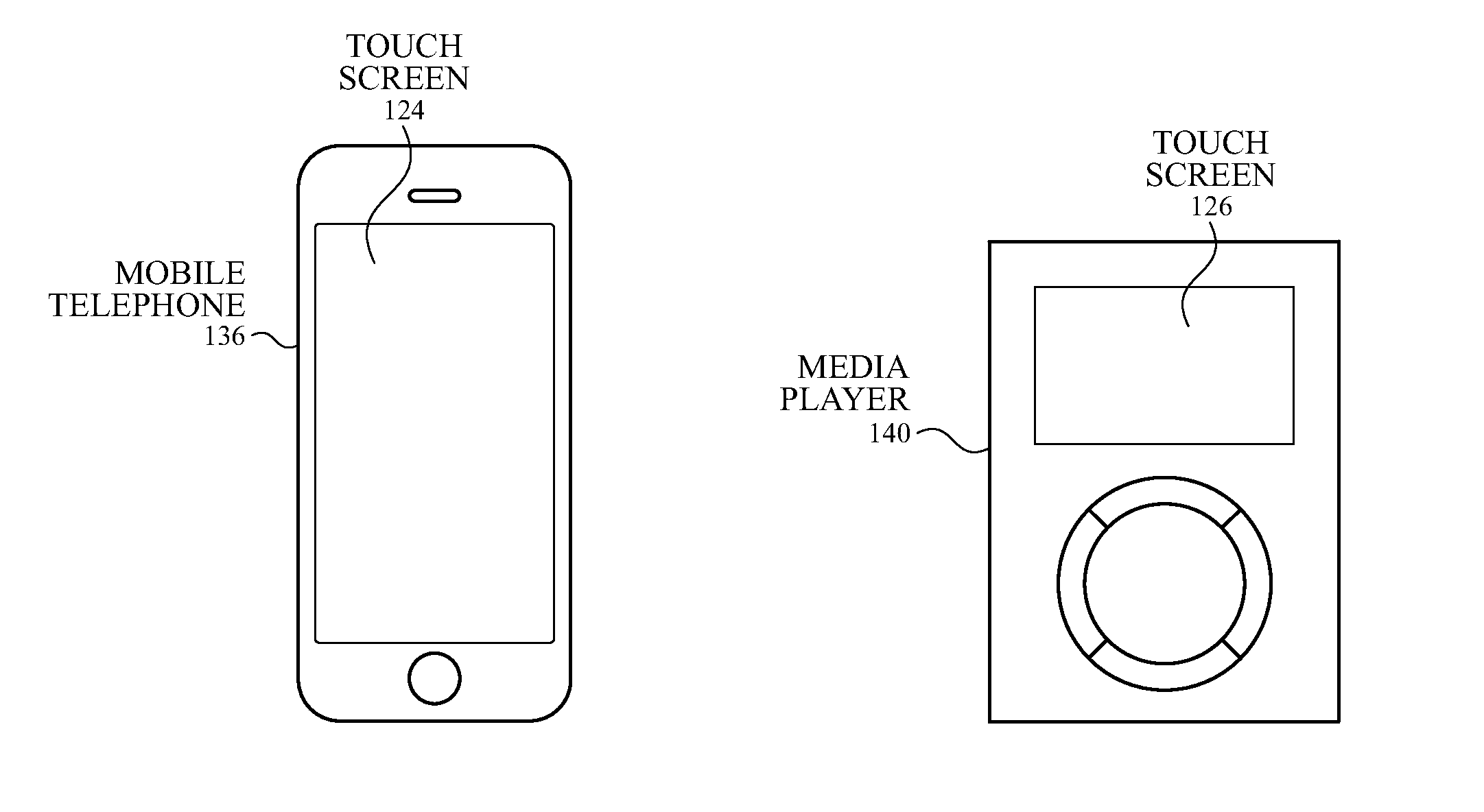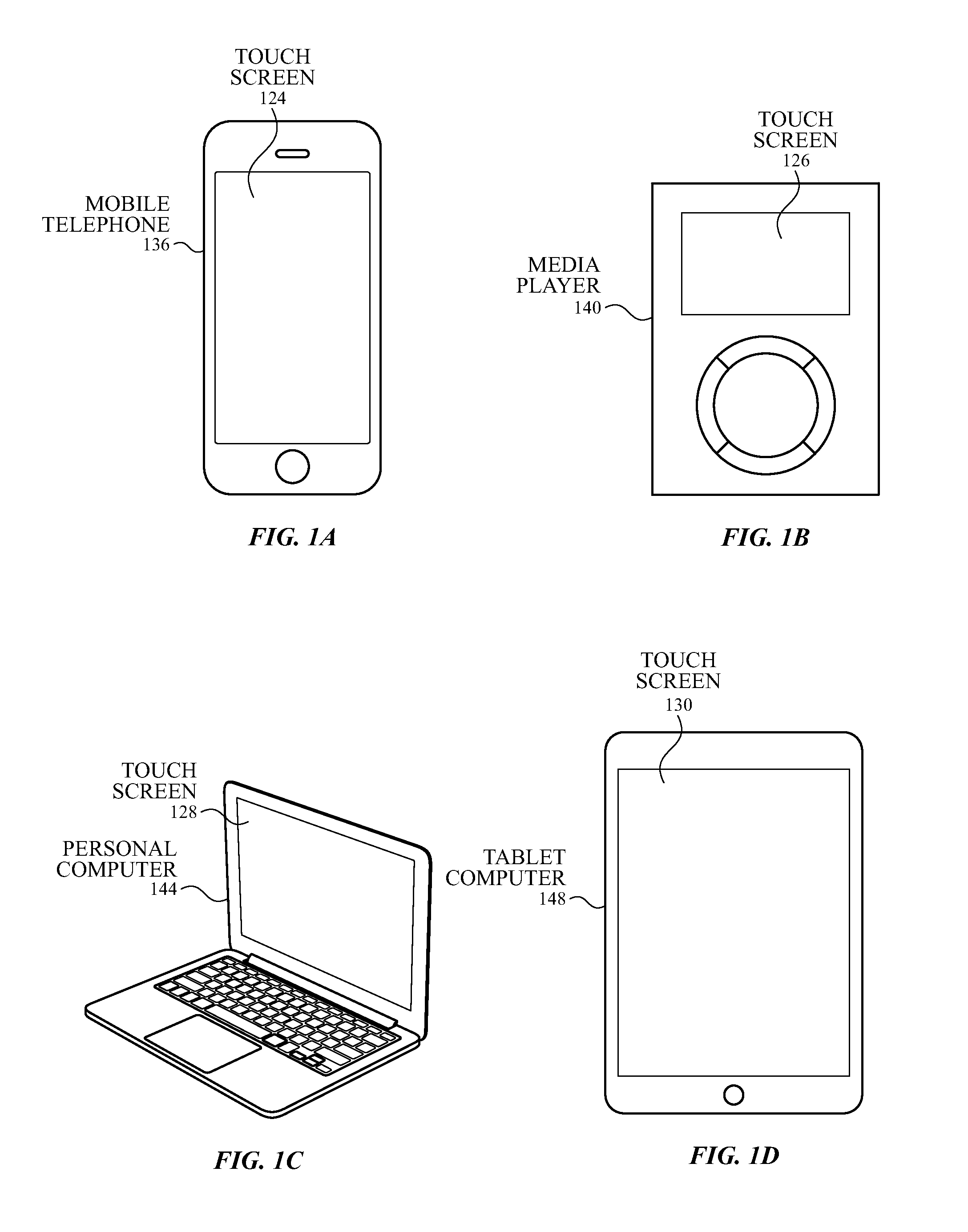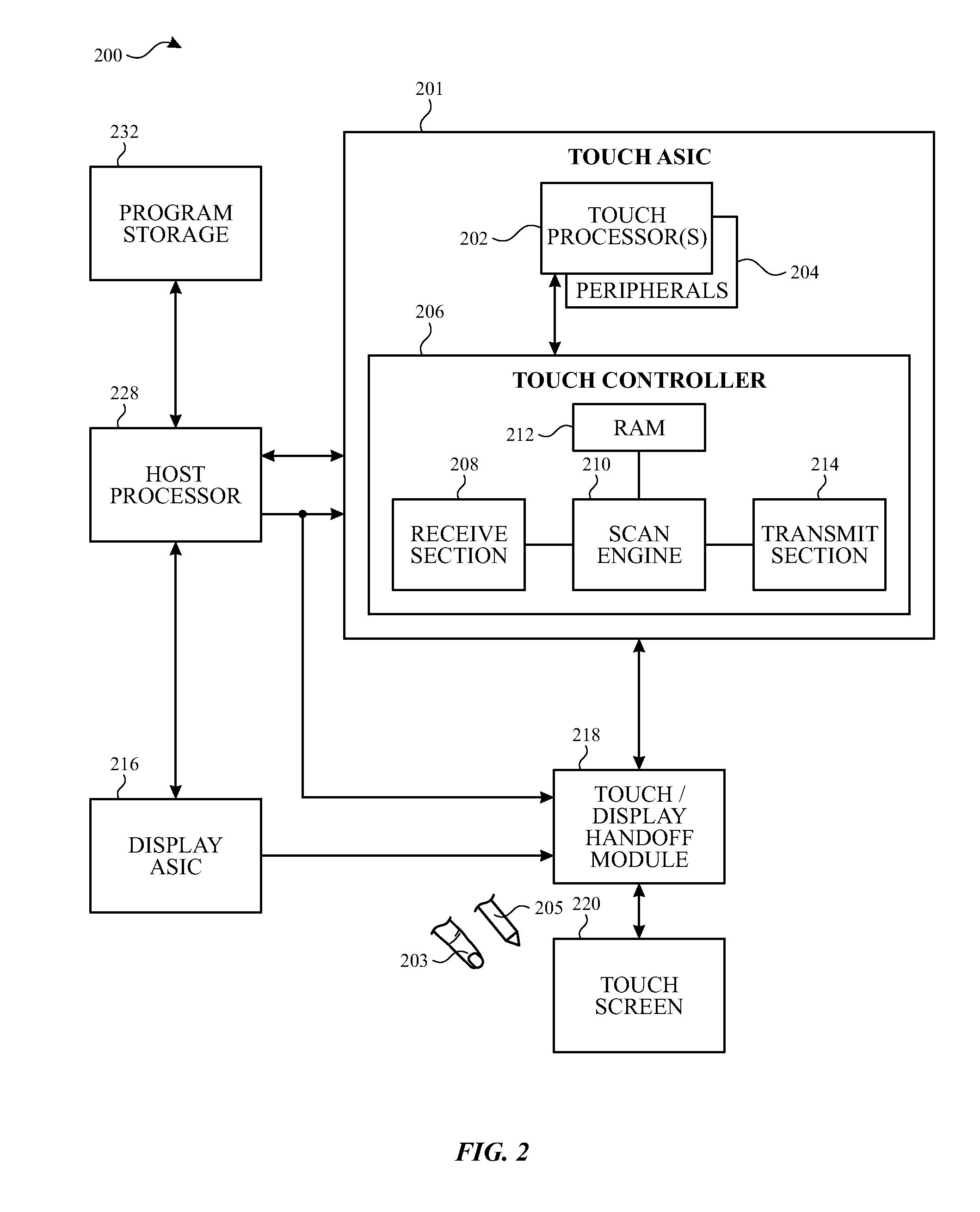Timing scheme for touch screen supporting variable refresh rate
a touch screen and variable refresh rate technology, applied in the field of touch sensitive display devices, can solve the problems of frame judder, lack of smoothness of touch response, and degrade performance, and achieve the effects of avoiding display artifacts, reducing power, and facilitating display operation
- Summary
- Abstract
- Description
- Claims
- Application Information
AI Technical Summary
Benefits of technology
Problems solved by technology
Method used
Image
Examples
Embodiment Construction
[0019]In the following description of examples, reference is made to the accompanying drawings which form a part hereof, and in which it is shown by way of illustration specific examples that can be practiced. It is to be understood that other examples can be used and structural changes can be made without departing from the scope of the disclosed examples.
[0020]This relates to synchronizing display functions with touch and / or stylus sensing functions for devices including a variable refresh rate (VRR) display. VRR display operation can be beneficial, for example, to reduce power when displaying static or slow changing data and / or to avoid display artifacts by providing sufficient time to render high fidelity images in computationally intensive environments (e.g., video game applications) before refreshing the display. However, adjusting the refresh rate of the display can complicate the synchronization of various sensing operations and can degrade performance. In a continuous-touch...
PUM
 Login to View More
Login to View More Abstract
Description
Claims
Application Information
 Login to View More
Login to View More - R&D
- Intellectual Property
- Life Sciences
- Materials
- Tech Scout
- Unparalleled Data Quality
- Higher Quality Content
- 60% Fewer Hallucinations
Browse by: Latest US Patents, China's latest patents, Technical Efficacy Thesaurus, Application Domain, Technology Topic, Popular Technical Reports.
© 2025 PatSnap. All rights reserved.Legal|Privacy policy|Modern Slavery Act Transparency Statement|Sitemap|About US| Contact US: help@patsnap.com



